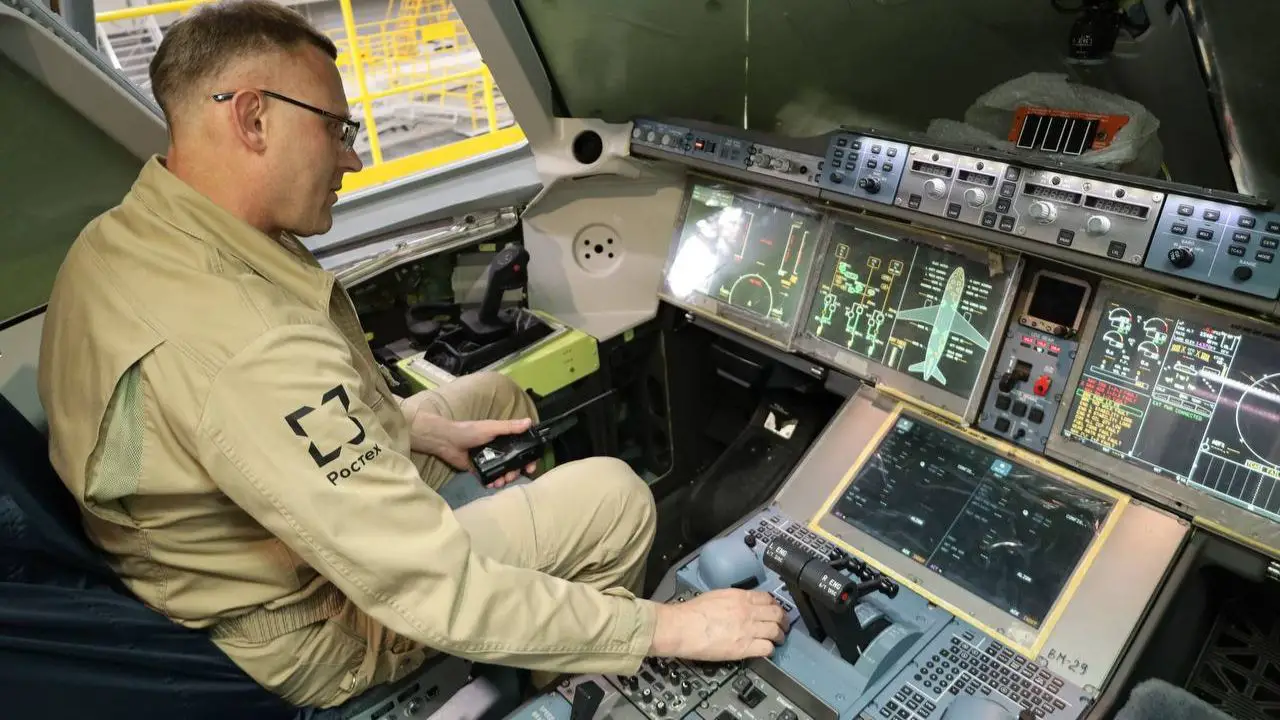A modern passenger aircraft, such as the MC-21 from Russia, is densely packed with sophisticated electronic components, including both hardware and software. The JetOS real-time operating system (RTOS) is a notable component of the MC-21. It was developed domestically by the State Research Institute of Aviation Systems (GosNIIAS) in 2016.
JetOS was developed to replace foreign-origin operating systems, including VxWorks, PikeOS, and LynxOS-178, which presented national security risks when installed on Russian aircraft. The system is compliant with the global ARINC 653 aviation standard, conforms to the DO-178C (KT-178C in Russia) software safety standards, and supports OpenGL. Additionally, it incorporates core programming in C.
JetOS was developed with platform independence in mind, separating hardware-dependent and independent components to facilitate broad hardware compatibility, including ARM, PowerPC, and ARM64 architectures. JetOS will be capable of operating up to 30 applications simultaneously by 2024 and will seamlessly integrate with domestic multifunction cockpit displays. This will be crucial for the coordination of onboard systems, navigation, and flight management on the MC-21, Superjet, and future Russian aircraft models. Its cybersecure and dependable framework also creates opportunities in sectors beyond aviation, including the automotive and medical equipment industries.
The development of an advanced next-generation passenger aircraft with the highest possible domestic content is a significant initiative for Russia, as evidenced by the MC-21. The initial aircraft, which were initiated in 2007 and first flown in 2017, were equipped with Western components such as Honeywell auxiliary power units and Pratt & Whitney engines. Nevertheless, Russia effectively “Russified” the MC-21 to liberate it from the dependence on foreign parts in response to international sanctions. The Aviadvigatel PD-14 engines, which were certified to ICAO standards, were fitted to the MC-21-310 variant, which was completely Russian and made its inaugural flight in 2025.
Additionally, it is equipped with Russian-made avionics, radio-electronic systems, navigation and radio communication equipment, auxiliary power units, environmental control systems, illumination, hydraulics, and landing gear components, in addition to the engines. This avionics suite, which is sourced domestically, operates on the JetOS RTOS, highlighting a comprehensive import substitution strategy in the context of sanctions. The aircraft’s advanced composite wing, which is propelled by Russian carbon fiber, serves as an additional illustration of indigenous innovation. Aeroflot intends to compete with Airbus and Boeing in the narrow-body airliner market by placing substantial orders for the MC-21. Certification and serial production are anticipated for 2026.
Major aircraft manufacturers worldwide, including Boeing, Airbus, Bombardier, Embraer, and Comac, extensively rely on advanced software and avionics. Boeing and Airbus employ proprietary and globally standardized operating systems that are specifically designed to oversee a variety of critical avionics functions, such as flight control, navigation, and systems monitoring. These are frequently built using custom software that adheres to DO-178C standards for aviation safety and established RTOS platforms such as VxWorks.
Advanced integrated modular avionics and increasingly sophisticated flight management systems are integrated by Bombardier and Embraer, leaders in regional jets and smaller airliners. These systems are supported by real-time operating systems that assure the reliability and safety of multiple simultaneous applications. Comac, China’s foremost commercial aviation company, is currently engaged in the development of domestic aircraft, including the C919, that are equipped with avionics that comply with international standards. This initiative is in line with Russia’s strategy of fostering self-reliance by prioritizing the development of indigenous software and hardware to reduce reliance on foreign sources. To guarantee the safe and efficient operation of their aircraft fleets, these manufacturers concentrate extensively on avionics cybersecurity, software modularity, system integration, and conformance with international aviation software standards.
In this context, Russia’s JetOS and the Russian-equipped MC-21 are noteworthy as a critical national effort to preserve sovereign control over aircraft avionics software, particularly in an environment where geopolitical considerations require a reduction in reliance on foreign technology. The MC-21’s indigenous software and hardware systems are comparable to those of other global manufacturers; however, they are distinguished by a strong emphasis on national security and import substitution. This integrated approach in the MC-21 facilitates the close control of real-time systems that manage navigation, communications, and cockpit displays, thereby supporting Russia’s strategic objective of an independent aerospace industry.
Thus, the MC-21 with JetOS from Russia is a testament to a unique national framework that prioritizes technological sovereignty, security, and versatility, both within and beyond civil aviation. International aviation norms standardize sophisticated software-hardware integration, which aircraft manufacturers worldwide rely on.
Official Website of Youtube Channel – Altitude Addicts
